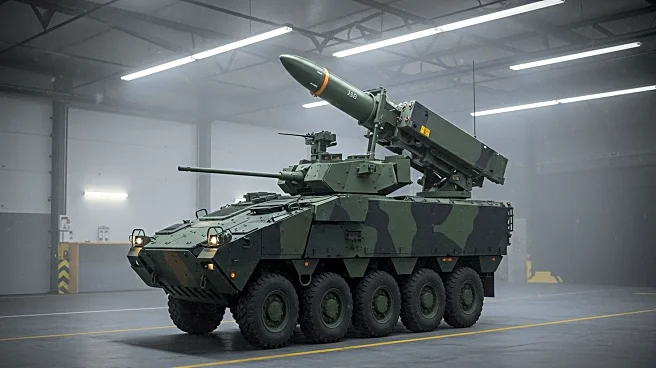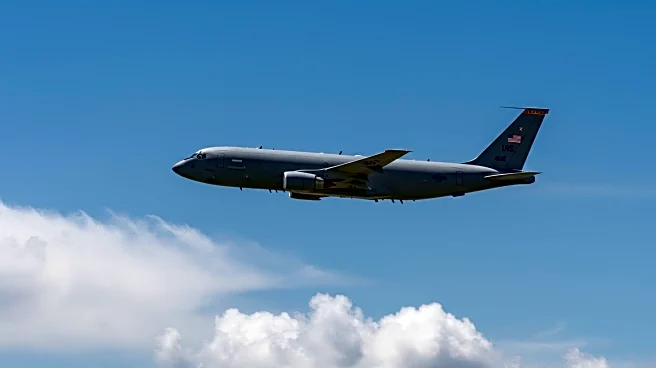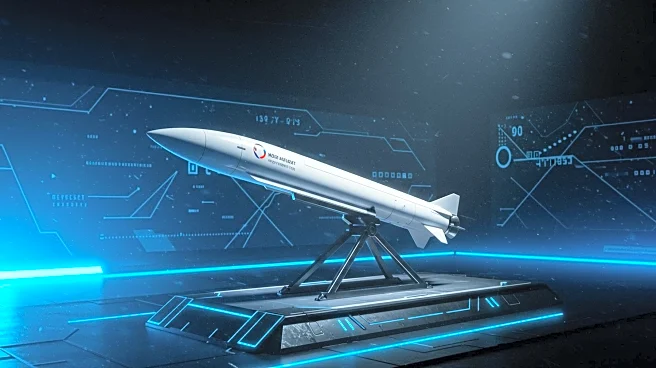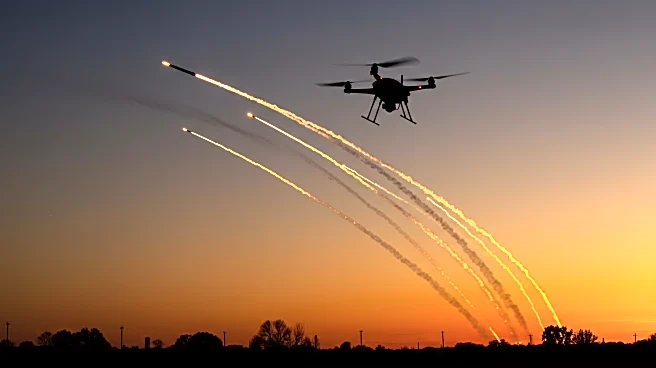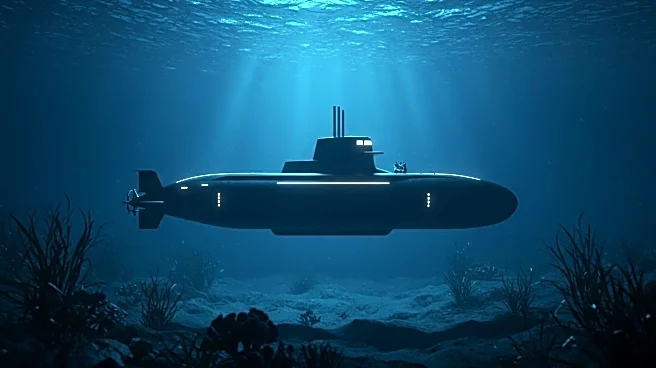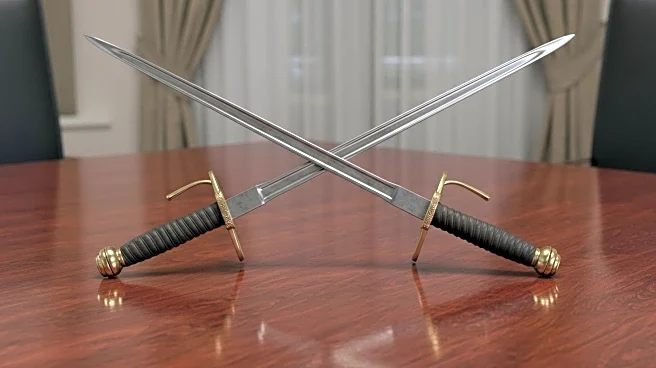What's Happening?
The British Army has successfully integrated the Javelin anti-armour missile into its Boxer mechanised infantry vehicles. This integration follows a series of firing trials conducted at Salisbury Plain earlier in 2025. The Javelin missile was mounted on Kongsberg’s RS4 Remote Weapon Station, marking a significant advancement in the vehicle's capabilities. The trials included various tests such as stowage, capacity, noise and vibration, electromagnetic compatibility, live crew clearance, fording trials, and battlefield mission simulations. The British Army plans to achieve initial operating capability for the Boxer vehicles by the fourth quarter of 2025, with full operating capability expected by 2032. The integration is part of a broader effort to enhance the British Army's modular armour platforms, with several variants of the Boxer vehicle under development.
Why It's Important?
The integration of the Javelin missile into Boxer vehicles represents a strategic enhancement of the British Army's combat capabilities. This development is crucial for modernizing the army's mechanised infantry and ensuring readiness for future conflicts. The ability to equip vehicles with advanced anti-armour capabilities is vital for maintaining a competitive edge in military operations. The ongoing delays in the Boxer programme, primarily due to supply chain issues, highlight the challenges faced in military procurement and development. The successful integration of the Javelin missile could serve as a model for future upgrades and innovations in military technology, potentially influencing defense strategies and procurement policies in the U.S. and other allied nations.
What's Next?
The British Army is expected to continue its testing and demonstration phase for the Boxer vehicles, focusing on achieving full operating capability by 2032. This will involve further development of various Boxer variants, including command platforms, specialist carriers, and ambulances. The integration of additional technologies and systems into these vehicles will be crucial for meeting the evolving demands of modern warfare. The U.S. military and defense contractors may closely monitor these developments, considering potential collaborations or adaptations of similar technologies for their own forces.
